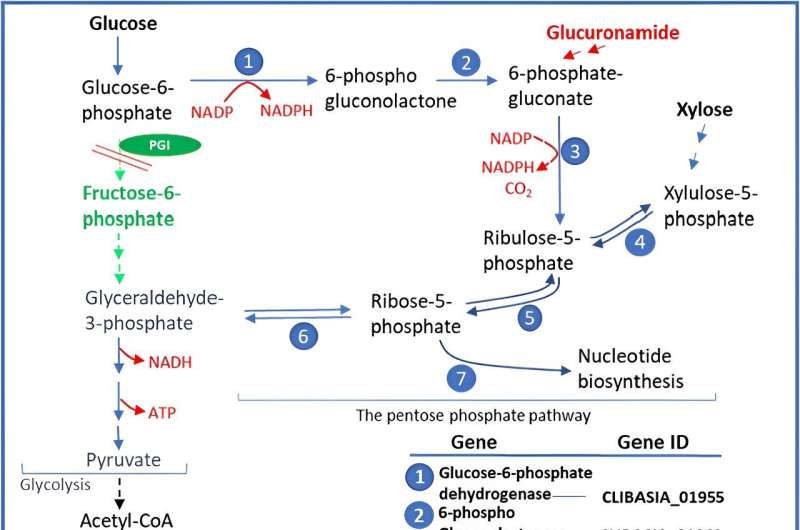This article has been reviewed according to Science X's editorial process and policies. Editors have highlighted the following attributes while ensuring the content's credibility:
fact-checked
peer-reviewed publication
proofread
Unlocking the secrets of citrus greening: Cultivating Candidatus Liberibacter asiaticus

Huanglongbing (HLB), also known as citrus greening, poses a severe threat to citrus production worldwide. The disease is caused by the bacterium Candidatus Liberibacter asiaticus (Las), which has been challenging to culture outside its host due to its intracellular nature and genome reduction.
Due to these challenges, in-depth research on effective cultivation methods for Las is essential to develop better control strategies.
New research on the bacterium conducted by a team from USDA-ARS-USHRL, the University of Florida, and other institutions, and was published in the journal Horticulture Research on January 10, 2024.
The study focuses on optimizing growth conditions for Las in vitro, allowing for a significant increase in bacterial cells and maintaining their viability over extended periods. This breakthrough offers new avenues for studying Las and developing targeted control measures against HLB.
The team optimized a semi-selective medium based on nutritional and antibiotic screening assays, achieving a 100- to 1,000-fold increase in Las cell concentration. The bacteria remained viable for more than 20 months and displayed limited growth in subcultures. The study confirmed Las growth through fluorescence in situ hybridization and gene expression analysis.
Additionally, the research highlighted the importance of a helper bacterium, Stenotrophomonas maltophilia, in promoting Las growth in vitro. The co-cultured Las was successfully inoculated back into citrus seedlings via psyllid feeding, partially fulfilling Koch's postulates and resulting in HLB symptoms.
Dr. Yongping Duan, the corresponding author of the study, commented, "This is a crucial step towards understanding the biology of Las and developing effective strategies to combat HLB. Our ability to culture Las in vitro opens up new possibilities for research and testing potential antimicrobial treatments."
The successful cultivation of Las in vitro has significant implications for citrus disease management. It enables detailed study of the bacterium's biology, interactions with its hosts, and the screening of antimicrobial compounds.
This advancement brings us closer to developing targeted treatments for HLB, potentially mitigating the devastating impact of this disease on the citrus industry. Further research will focus on refining the culture method and exploring its applications in disease control strategies.
More information: Desen Zheng et al, Towards the completion of Koch's postulates for the citrus huanglongbing bacterium, Candidatus Liberibacter asiaticus, Horticulture Research (2024). DOI: 10.1093/hr/uhae011
Journal information: Horticulture Research
Provided by TranSpread




















